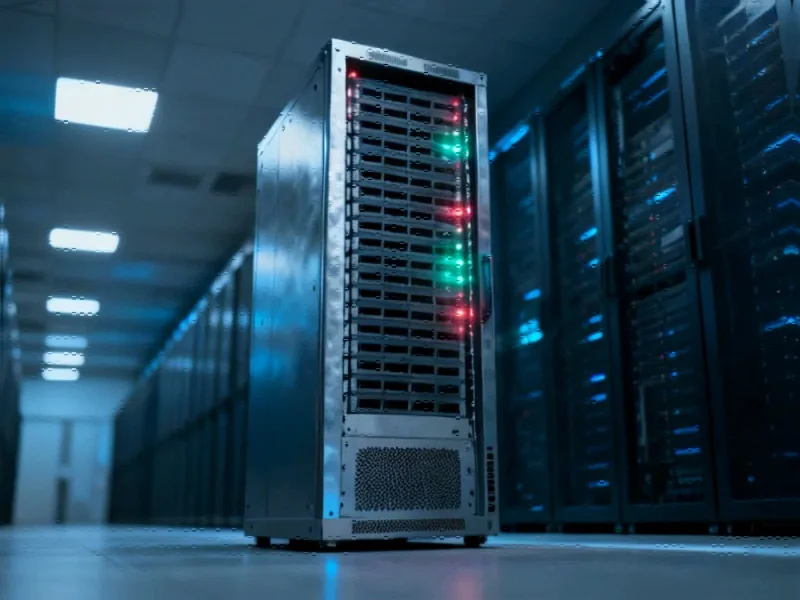The Domino Effect of a Single Cloud Failure
The massive AWS outage that crippled everything from Amazon’s own e-commerce platform to Meta’s WhatsApp and OpenAI’s ChatGPT reveals a troubling reality about our modern internet infrastructure. When a single cloud provider’s database service in one region fails, it can trigger a global cascade of service disruptions affecting millions of users and thousands of organizations.
This incident, originating from Amazon’s US-EAST-1 region in northern Virginia, demonstrates how concentrated our digital ecosystem has become. As Davi Ottenheimer, vice president at data infrastructure company Inrupt, noted: “When the system couldn’t correctly resolve which server to connect to, cascading failures took down services across the internet. Today’s AWS outage is a classic availability problem, and we need to start seeing it more as data integrity failure.”
DNS: The Internet’s Fragile Phonebook
The core issue centered around DNS resolution problems with Amazon’s DynamoDB database APIs. The Domain Name System serves as the internet’s fundamental addressing system, translating human-readable web addresses into numerical IP addresses that computers understand. When this system fails, it’s like having a phonebook that provides wrong numbers for every listing.
AWS acknowledged the DNS resolution issues in their status updates, recommending that affected parties flush their DNS caches to resolve lingering problems. While DNS issues can sometimes indicate malicious activity like DNS hijacking, there’s no evidence suggesting this outage was anything other than a technical failure.
Business Continuity in the Cloud Era
The widespread impact across government services, financial platforms, and communication tools raises critical questions about redundancy planning and multi-cloud strategies. Organizations that relied exclusively on AWS’s US-EAST-1 region found themselves completely offline, while those with more distributed architectures experienced limited impact.
This incident highlights why business continuity planning must evolve to address cloud concentration risks. As companies increasingly depend on cloud infrastructure, understanding the implications of regional dependencies and single-point failures becomes crucial for maintaining operations during such disruptions.
Technical Response and Recovery Timeline
The outage began around 3:00 AM ET, with AWS applying initial mitigations by 5:22 AM ET. By 6:35 AM ET, Amazon confirmed that underlying technical issues had been fully addressed, though they warned that some services would need additional time to process backlogs. This rapid response demonstrates the sophisticated incident management capabilities of major cloud providers, but also underscores how even brief outages can have prolonged effects.
As organizations evaluate their cloud strategies, considering security and reliability options across different platforms becomes increasingly important. The incident also coincides with broader industry developments in infrastructure planning and regulatory considerations.
Broader Implications for Digital Infrastructure
This outage serves as a wake-up call for organizations relying on cloud services. The concentration of critical services within a few cloud providers and specific regions creates systemic risks that extend far beyond individual companies. As we’ve seen with recent related innovations in computing infrastructure, the need for resilient architecture has never been more apparent.
The incident also highlights how market trends toward consolidation in cloud services create both efficiencies and vulnerabilities. While centralized cloud computing offers tremendous benefits in scalability and cost-effectiveness, this outage demonstrates the flip side: when critical infrastructure components fail, the ripple effects can be global in scale.
Moving Forward: Building a More Resilient Internet
As we analyze this incident, several key lessons emerge for businesses and technology leaders:
- Diversify cloud dependencies across regions and providers where possible
- Implement robust monitoring for DNS resolution and API endpoints
- Develop comprehensive incident response plans specifically for cloud service disruptions
- Regularly test failover mechanisms and disaster recovery procedures
The AWS outage serves as a powerful reminder that in our interconnected digital world, the strength of our collective infrastructure depends on both the reliability of individual components and the resilience of the systems that connect them. As cloud computing continues to evolve, building more fault-tolerant architectures must become a priority for everyone from individual developers to enterprise technology leaders.
This article aggregates information from publicly available sources. All trademarks and copyrights belong to their respective owners.
Note: Featured image is for illustrative purposes only and does not represent any specific product, service, or entity mentioned in this article.



